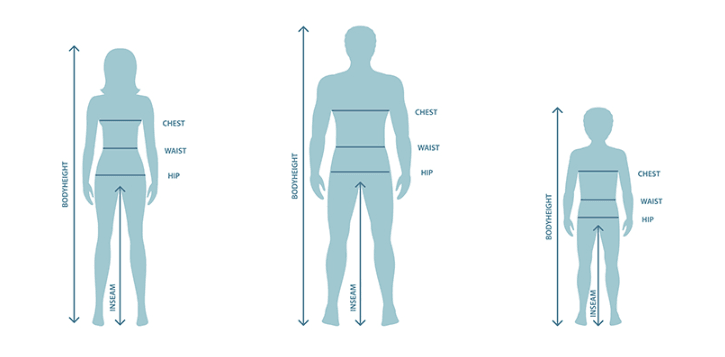
FINDING THE RIGHT SUIT FOR YOUR BODY TYPE
If you're a man who wants to find the right suit for your body type, then this article is just what you need. It's not always easy to tell what size suit you need. Different brands may have different sizing so it is important to take measurements before purchasing your suit.You can find these measurements on the website of the retailer or by contacting them directly. This article will show you how to get accurate measurements and help determine which style of suit would be best suited for your body type.
UNDERSTAND THE DIFFERENT TYPES OF SUITS
The suit is the most important part of your wardrobe. You'll wear it for all sorts of occasions, so it's important to find the right suit for you. Impeccable tailoring and attention to detail are key ingredients of a quality suit. However, there are types of suits like "slim" or "classic" that make it more difficult to figure out the best option.
There are two main options when deciding on what type of style you need; slim or classic. A slim suit is an option if you're looking for something more fitted and has less padding in the collar and lapels than classic suits do. A classic suit is better if you're looking for something that will last through several seasons without changing.
A classic option can be considered a safe bet if you're unsure of what style fits your body the best. It's the most common and more versatile than other styles.
GET A SUIT THAT FITS WELL AND HAS THE RIGHT STYLE FOR YOU
If you know your measurements and how clothing normally fits you, it may be easier to find a quality slim-fit suit that will complement your figure. With any type of suit, it's important to take measurements from a couple of spots with a tape measure to ensure the best fit. Use those two numbers as a guideline for what size you need.
After your initial measurements, you should make one change at a time and assess how they impact the fit of your suit before going on to another alteration. For example, if the shoulders fit well but the jacket is too long, shorts can be shortened. The pants also need to be altered if they're too loose or too tight.
If you find that your legs and hips are one size and your waist is another, it's best to take in the sides of the suit rather than letting out the pants or jacket. This way you can avoid bunching or extra fabric in any one area.
YOUR JACKET SHOULD COVER YOUR HIPS
As a general rule, the jacket should cover your hips and pants should cover your shoe tops so there isn't an awkward gap between the two. The sleeves of the jacket should be close to your wrist without being too tight or loose. To check this, ask a friend to try the jacket on. If you have a sweater or blazer that fits well, they can use it to find their size for comparison.
If your suit is still too big after all of these adjustments, you might want to consider another brand with different measurements. It's not always easy to tell what size suit you need. Different brands may have different sizing so it is important to take measurements before purchasing your suit. You can find these measurements on the website of the retailer or by contacting them directly.
CONSIDER ALTERATIONS WHEN NECESSARY
Finding a suit that's tailored properly from the ground up can be difficult if you don't know what you're doing. It's best to have a knowledgeable tailor on hand for alterations. Each area of your suit needs to be tweaked for it to look the way it's supposed to.
For example, if you're wearing a dress shirt that has an ill-fitting collar, simply replacing the shirt will not do much good. The same goes for the pants; they need to fit properly at the waist and the length needs to be adjusted.
It's best to avoid major adjustments like lengthening or shortening a suit unless you know what you're doing and how it will impact the look of your outfit. The sleeve, for example, can be either shortened or lengthened by an inch but not anymore without it looking awkward. The trousers also need to be hemmed properly. If you're not wearing them with shoes, it's best to leave about an inch of fabric that can be hemmed at a later date without much impact on the overall look.
KNOW YOUR BODY MEASUREMENTS
It's hard to tell what size suit you need without taking measurements. A website or company will have measurements on the site, or you can contact them for more information.
This will help you determine the size of your body, and then you can read about different body types below - or just ask a shop assistant for advice. When you know the measurements of your body, it's easier to find a suit that fits well.
Take measurements at home before going shopping.
If you're on the larger end of a certain measurement, that means you're on the lower end of another. For example: if your waist is 36", and your chest is 44", then your waist will be slightly bigger than your chest.
Take measurements in centimeters or inches, make sure you add measurements for when you move (when breathing) and when your standstill.
BODY MEASUREMENT

WAYS TO TAKE BODY MEASUREMENT
1. Chest - measure around the fullest part, just under the arms.
2. Waist - measure around your natural waistline or just above your belly button.
3. Seat - measure around the widest part of your bottom at the top of your legs.
4. Thigh - measure about halfway between the crotch and knee on the front of your thigh.
5. Inside leg - you can measure this in two ways: either from the crotch to ankle (if wearing pants with a zipper), or from waist to floor (if you're wearing shorts). Add 5-10cm for when you move and another ten centimeters if standing still.
5. Foot width - measure with shoes on, but don't include the width of your shoe.
6. Height - if you're sitting down, measure from the top of head to floor. If standing up, measure from the floor to the top of the head (remember to take off any hat or heeled shoes).
7. Hat size - measure around the widest part of your head (usually the forehead).
8. Hand length - measure from your wrist to the end of your middle finger, excluding any rings or watch.
It's also good to know your neck size (the collar of a suit sits around this area) and sleeve length (this is approx. how long your sleeve will be once you roll up the cuff of the shirt, the cuff should sit around this area).
CONCLUSION
Finding the right suit for your body type can be difficult. It is important to know what size suits you, and that will depend on your measurements. The different types of suits are based on three things: Body Type, Fashion Style, and Seasonal Climate. If you have a general idea about these factors then finding the perfect suit should be much easier! Our customer service team would love to help out with any questions or concerns so don't hesitate to reach out ;) Good luck!


